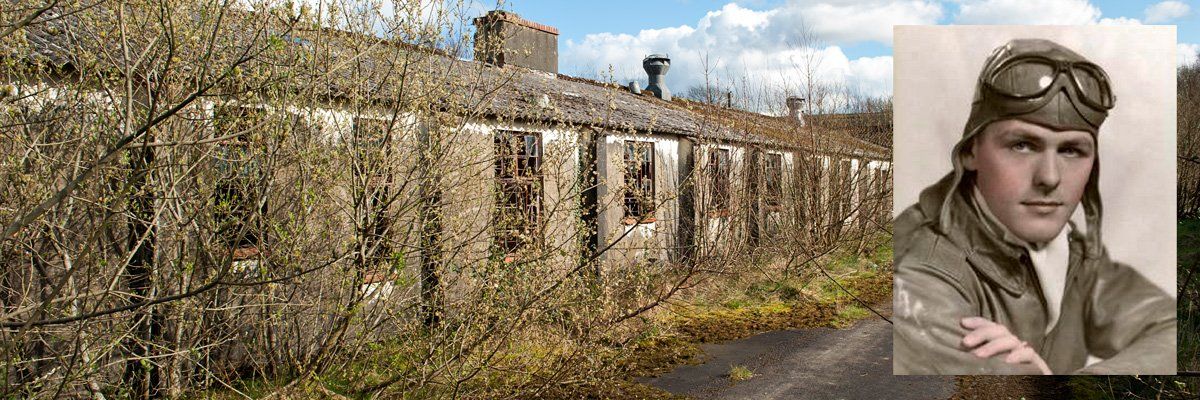Ronald 'Bud' Wolfe
During the 'Eagles' time at Eglinton, the story of Roland 'Bud' Wolfe took place. He had taken off on a mission from Eglinton with two other Spitfires, the weather was overcast as the trio climbed up through the cloud. As they made their way out over the Donegal coast for a convoy patrol, his plane started to overheat and lose power, he radioed to his fellow pilots that he had to return to Eglinton and that was the last they saw or heard of him until after the war. He baled out over Inishowen and landed safely on bogland near Gleenely, his plane buried itself into the soft peaty landscape. Trying to make his way back to the shore and Eglinton, he was stopped and arrested by an Irish Defence volunteer. Ireland was neutral during the war and had a policy which interned any foreign military personnel caught on their soil.
He ended up being sent to the Curragh Internment Camp in Kildare. Here he was the only American in the camp and joined 140 Germans,100 Allied servicemen from Poland, Canada, New Zealand and Britain plus 400 IRA internees Internment in Ireland was surreal, to say the least, they were allowed visitors to the camp, could sign in and out of the camp if they had earned parole time. They also could take part in sports like golf, fox hunting and fishing but they were not allowed to escape, as outlined in the Geneva Convention for neutral countries. Bud, desperate to get back to what he had volunteered for walked out of the camp, he headed for Dublin where he caught a train to Belfast, from here he took a bus to Eglinton arriving back two weeks after going missing.
What happened next came as a shock, he was detained by the RAF for ten days while a whole diplomatic situation was debated at the highest level of government. The issue was the fact that he was an American who had been captured on active duty with the RAF, five days before the US was officially at war. Not wanting to upset a neutral country and in violation of the Geneva Convention, the government ordered his return to the Irish authorities. So he ended up back at the Curragh but after a while was sent to the United States where he joined the USAAF and continued flying during the war. In June 2011 the Spitfire he was flying at the time was located by Johnny McNee, an aviation historian and subsequently excavated from the bog.
Remarkably after cleaning and swapping parts between the wing guns, a complete browning machine gun was test-fired and worked. The remains of the plane are now on display at the Waterside Workhouse Museum in Derry. The tail wheel which left Eglinton runway seventy years previous, was found still inflated and returned to the City of Derry Airport for display. All the old building and roads where Bud Wolfe and his comrades would have walked, slept, eaten, got briefed and debriefed on missions are still there falling apart, the billets, ops room, debrief room, tower, etc, a short drive from the main runway. Today they are used for private storage and small businesses, others are left to decay which is shameful considering the rich heritage and tourism value associated with them.




